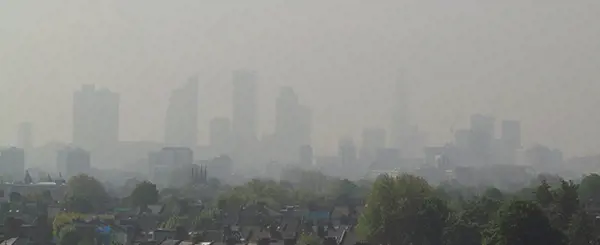The problem of air pollution in cities now rarely escapes media spotlight. London hit headlines at the start of 2016 for exceeding its annual air pollution limit after just one week. For London, it was not the first time that EU limits on nitrogen dioxide (NO2) had been exceeded, but rather the fifth consecutive year
[1].
Of course, since the Industrial Revolution cities have long been associated with higher pollution levels relative to their country counterparts; this is not new. But as our awareness of the damaging impacts grows, arguably so too should our mitigation efforts; whereby the true extent of the problem begins to emerge. So what exactly is the problem with air pollution, and is there an opportunity for land use planning to have a greater role in its solution?
NO2 is a toxic gas arising predominantly from road transport exhausts, the human health impacts of which can cause respiratory problems of varying severity, heart attacks, strokes and premature death
[2]. A recent study by Kings College London (commissioned by Transport for London and the Greater London Authority) on the health impacts of air pollution assessed the ‘mortality burden’ of NO2 in London, estimating that average life expectancy would decrease by up to 17 months based on long term exposure to 2010 London pollution levels
[3]. Air pollution is also found to have a negative impact on ecosystem health and disease susceptibility in vegetation, in addition to its contribution to climate change. The cost of air pollution to London’s economy is thought to be c. £3.7 Billion
[4].
So far, actions taken have been insufficient to substantially alleviate pollution generally. It is also difficult for the significance of London’s poor annual air quality performance to go unnoticed, so soon after the highly anticipated Paris climate conference (‘COP21’) agreement in December 2015 (the deal for which is yet to be ratified by the UK and will reveal key indicators on Prime Minister Theresa May’s approach to planning policy on these matters
[5]). Certainly more needs to be done to improve air quality; we are caused to question the effectiveness of current mitigation tools such as London’s Congestion Charge - arguably more of a ‘damage limitation’ measure than a robust solution.
The start of Sadiq Khan’s first term as Mayor of London has seen a promising level of attention given to tackling polluted city hot spots. Examples of initiatives include proposals for:
London’s Mayor could learn from international examples too. During an NLP study trip to Copenhagen, we experienced first-hand the successful implementation of generously-sized and safe cycle-only routes and bridges throughout the city; a concept that London’s ‘Super Highway’ emulates, albeit currently with somewhat less conviction.
Below ground, the potential for an underground cycle highway, away from road congestion and associated harmful pollution, has previously been criticised as ‘ludicrous’
[12]. Whilst this may not be the answer, surely, as befits a leading global city, there must be scope for London to encourage innovative planning solutions?
Given Sadiq’s proposed commitments to the cause, perhaps all will become ‘clear’ in the end.



